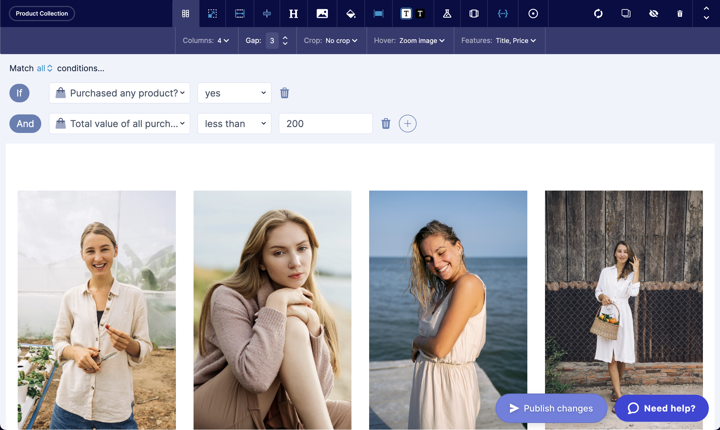
I hope this will resonate with some of you who are working hard to build companies in spite of the doom and gloom that seems to be everywhere on LinkedIn and Twitter these days. This blog is not one of those blogs.
It's an anti-doom and gloom blog. Because I think eCommerce merchants need to hear it.
Earlier today, an agency owner went on and on about just how bad it's going to get for D2C. To me, these posts feel more like a fear tactic to drive interest and engagement in social content. Fear sells I guess, but I prefer to be a glass-half-full kind of person (I'm an entrepreneur after all).
Ok, but was he right?
Everyone is seeing that the playbooks that used to work - getting a shop template and letting Facebook find your customers for you - aren't cutting it anymore. But in my opinion that represents a new opportunity for you.
Markets don't stand still, and neither should you. If you've been in this game long enough you know that every time something comes along that works, you better squeeze it for all you can, because it will not last. Great digital marketing has always been about testing and moving with the trends, finding those new opportunities early, and connecting with customers authentically.
Does this make D2C dead? Hell no. It just changes where your focus needs to be. You're a founder. And founders find a way.
What it really means is that you need to shift into new playbooks and continue to find the levers that drive growth and profitability for your business.
We've been talking to tons of people and running our own tests. The evidence is overwhelmingly clear that the recommendations I'm about to share work, and they are easy to implement. So, let's dive into three things you can do right now to immediately improve your eCommerce business...
#1. Replace all your ad, email, and SMS campaign links to point to landing pages ASAP.

For a long time, no one in eComm really seemed to care much about landing pages. I remember asking an exec at a large eCommerce technology company about landing pages. "Aren't they more for B2B and lead gen marketing," he quipped. At the time, this was fairly consistent thinking across the space. Not quite a scoff, per se, but more a lack of certainty about the role that bespoke shopping experiences could play. Sending traffic to the product page was working just fine. If it ain't broke, don't fix it, so goes the saying.
Except, like clockwork, the playbook broke, thanks to Apple and their changes to iOS.
90% of the ads and emails I see point me to a PDP or a collection page. Sometimes a home page. I land there, it's a mess. Five things pop up. It's not targeted at all. I'm being asked to spin a wheel, fill out a quiz, and so on.
Instead, you should be creating dedicated landing pages for every marketing campaign to maximize every set of eyeballs that lands on your ad, email, and SMS campaigns. You need to control and get more out of the on-site experience, and the best way to do this is with shoppable landing pages. Cody Plofker over at Jones Road had a great tweetstorm on this last week:
"It's official, landing pages convert way better for us than PDPs ... We used to send all traffic to PDPs because they worked fine. But with iOS + other issues, we want to do everything we can to maximize our return on ad spend. Creative testing is a must, but don't sleep on LP testing."
If you're not using landing pages, you can get your first one live on Unstack free by going here. .
#2. Bring smarter personalization into the on-site experience

You've probably got customer data and segments sitting in Klaviyo. Sending targeted emails and SMS is a proven playbook, but you should start using that data in the on-site experience to personalize product recommendations and the types of content displayed to users. This will drive higher conversion rates and order values.
For example, we saw Crossnet drive 250% increases in conversion by personalizing the UGC content they showed to users based on the specific ad creative and persona it was targeting (e.g. parents vs athletes). Ingenious! Setting this up takes just a few minutes with Unstack. There's no reason not to do it.
#3. Get smarter by implementing fast and reliable tracking
What is the ROAS? Can you trust it? Facebook says one thing. Shopify says another. Klaviyo says another. And don't forget about GA. Finding a source of truth is key here and platforms like TripleWhale and others can help you get to the bottom of what's actually working. We have a TripleWhale integration that automatically enables all your tracking and events, and other third-party tools have options for setting this up with some code.
Implementing these three recommendations will change your game in a big way. I guarantee it.
So yes, things are constantly changing, but change represents a massive opportunity for the entrepreneurs and marketers who lean into it and adapt. If you've already implemented these new playbooks, let me know what results you're seeing. If not, getting started is easy. All of these can be implemented without needing to know code.
